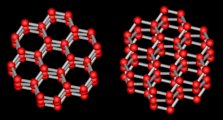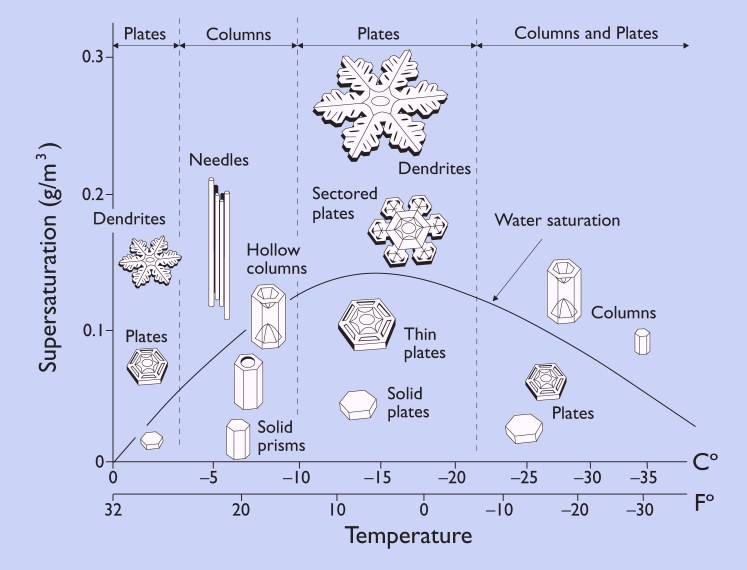Snow is not just frozen water, but beautiful crystal structures of near infinite variety.

“The water molecules in an ice crystal form a hexagonal lattice, as shown… [above] (the two structures show different views of the same crystal). Each red ball represents an oxygen atom, while the grey sticks represent hydrogen atoms. There are two hydrogens for each oxygen, so the chemical formula is H2O. The six-fold symmetry of snow crystals ultimately derives from the six-fold symmetry of the ice crystal lattice.”
Such symmetry can form a near infinite number of complex structures:
“The most basic form of a snow crystal is a hexagonal prism… This structure occurs because certain surfaces of the crystal, the facet surfaces, accumulate material very slowly…
“A hexagonal prism includes two hexagonal ‘basal’ faces and six rectangular ‘prism’ faces, as shown in the figure. Note that a hexagonal prism can be plate-like or columnar, depending on which facet surfaces grow most quickly.
“When snow crystals are very small, they are mostly in the form of simple hexagonal prisms. But as they grow, branches sprout from the corners to make more complex shapes.”

Further:
“The morphology diagram tells us a great deal about what kinds of snow crystals form under what conditions. For example, we see that thin plates and stars grow around -2 C (28 F), while columns and slender needles appear near -5 C (23 F). Plates and stars again form near -15 C (5 F), and a combination of plates and columns are made around -30 C (-22 F).
“Furthermore, we see from the diagram that snow crystals tend to form simpler shapes when the humidity (supersaturation) is low, while more complex shapes at higher humidities. The most extreme shapes — long needles around -5C and large, thin plates around -15C — form when the humidity is especially high./p>
“Why snow crystal shapes change so much with temperature remains something of a scientific mystery. The growth depends on exactly how water vapor molecules are incorporated into the growing ice crystal, and the physics behind this is complex and not well understood. It is the subject of current research in my lab and elsewhere.”
Snow, as is Water itself, incredibly nuanced and complex.







Pingback: 12 Posts of Christmas, 2014 (Day 3) | The Political Hat
Pingback: 12 Posts of Christmas, 2014 (Day 6) | The Political Hat
Pingback: 12 Posts of Christmas, 2014 (Day 11) | The Political Hat